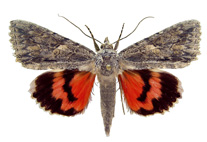Abstract
We describe a new species within the genus Liolaemus from southeast Argentine Patagonia. This new taxon, Liolaemus yatel sp. nov., presents anatomical traits shared with the Liolaemus lineomaculatus section within the Liolaemus lineomaculatus group, especially the absence of precloacal pores in both sexes. However, Liolaemus yatel sp. nov. does not exhibit trifid dorsal scales, which is a diagnostic character of the L. lineomaculatus group. Moreover, this new species differs from other taxa of the L. lineomaculatus group in that dorsal and nuchal scales either completely lack keels or are slightly keeled. We also report, for the first time, the presence of trifid scales in Liolaemus magellanicus, another species included in the L. lineomaculatus section but constituting an independent lineage regarding the L. lineomaculatus group. The phenotypic traits of L. yatel sp. nov. and the presence of trifid scales in L. magellanicus provide additional information for the study of evolutionary relationships among the species of the L. lineomaculatus section, especially the establishment of their diagnostic character states.

